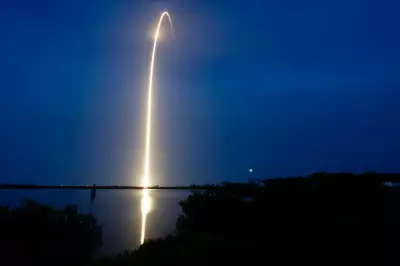
In a dramatic turn of events that reads like a Hollywood thriller, two NASA astronauts find themselves stranded aboard the International Space Station with no clear return date. Butch Wilmore and Suni Williams, who launched aboard Boeing's CST-100 Starliner on June 5th, are now caught in an unfolding space crisis that has left mission controllers scrambling for solutions.
Technical Nightmare Unfolds
The situation deteriorated rapidly when Boeing's spacecraft developed multiple critical failures during its journey to the orbiting laboratory. Engineers discovered five separate helium leaks in the propulsion system, alongside worrying malfunctions in several reaction control system thrusters.
What was meant to be an eight-day mission has now stretched into uncertainty, with NASA officials admitting they cannot predict when the astronauts might safely return to Earth. The spacecraft remains docked to the ISS while teams on the ground work tirelessly to understand the root causes of these alarming technical problems.
Boeing's Space Ambitions Under Fire
This incident represents another devastating blow to Boeing's reputation, coming after years of delays and technical challenges in their commercial crew programme. The Starliner, which has faced numerous setbacks since its initial development, was supposed to demonstrate Boeing's capability to reliably transport astronauts to and from the ISS.
Instead, the spacecraft has become a source of major concern for NASA's leadership. Steve Stich, manager of NASA's Commercial Crew Program, acknowledged the gravity of the situation, stating they're taking their time to understand the anomalies before considering return options.
Safety First Approach
NASA and Boeing engineers are currently conducting extensive tests at the White Sands Test Facility in New Mexico, attempting to replicate the thruster failures experienced in space. This methodical approach underscores the seriousness with which both organisations are treating the astronauts' safety.
The stranded crew members, both veteran astronauts, remain in good spirits aboard the ISS, which has sufficient supplies to accommodate them for several months if necessary. However, the psychological impact of an open-ended mission extension cannot be underestimated.
Broader Implications for Space Exploration
This incident raises urgent questions about the future of commercial space partnerships and the reliability of new spacecraft systems. With NASA increasingly relying on private companies for crew transportation, the Starliner's failures could have far-reaching consequences for the entire commercial space industry.
As engineers work against the clock to resolve these critical issues, the world watches anxiously, reminded once again of the inherent dangers of space travel and the courage of those who venture beyond our atmosphere.





